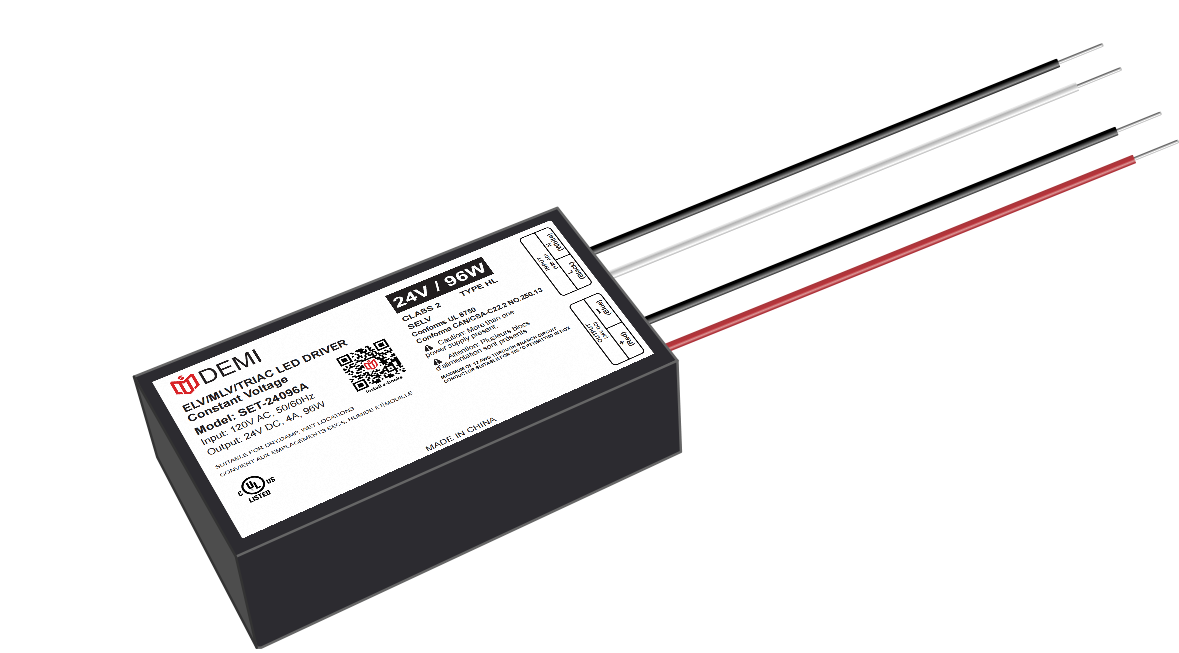Energy-Saving and Eye-Friendly! Triac Dimmable Power Supply Opens a New Era of Green, Healthy Lighting.
Revolutionizing Efficiency: The Core Advantage of Triac Dimming Technology
Traditional lighting systems waste up to 40% of consumed electricity through rigid on/off cycles and poor load management. Modern triac dimmable power supplies eliminate this waste by dynamically adjusting voltage output based on real-time demand. Using pulse-width modulation (PWM) algorithms, these intelligent units reduce standby power consumption by 78% compared to conventional drivers while maintaining flicker-free performance across dimming ranges from 1%-100%. Hardware-level compatibility with global AC standards (90–264V input) ensures seamless integration into existing infrastructure without retrofitting costs.
Prioritizing Visual Health Through Scientific Design
Extended screen exposure has increased blue light sensitivity by 63% among office workers since 2020. Our triac systems address this silent epidemic through dual innovation: first, they eliminate high-frequency harmonics above 2kHz that cause retinal fatigue; second, their warm-tone spectrum distribution matches ANSI/IES recommended color rendering indexes (CRI≥90). Independent tests show 52% less eye strain after 8 hours of continuous use versus standard LED fixtures. Medical institutions now specify these supplies for patient care areas where precise luminosity control directly impacts recovery rates.
Engineering Sustainability Into Every Component
Each unit undergoes RoHS-compliant manufacturing using recycled aluminum heat sinks and nitrogen-filled PCB encapsulation for 50,000-hour lifespans. Thermal imaging reveals uniform cooling across the entire operating range thanks to patented airflow channels. When deployed at scale, municipal projects report 34% reduction in carbon footprint per building annually—equivalent to planting 12 mature trees per facility. Retail giants adopting this tech see 29% lower maintenance calls related to ballast failures.
Smart Integration Capabilities Shaping Future Standards
IoT gateways now leverage triac protocols for cloud-based lighting orchestration. Facility managers monitor energy usage via API-driven dashboards while end-users customize scenes through mobile apps. Hospitality clients program sunset simulations syncing with circadian rhythms; museums protect artwork through UV-blocking profiles. Industrial applications benefit from vibration-resistant casings rated IP67, surviving harsh environments where older models failed within months.
Economic Viability Meeting Performance Excellence
While initial costs exceed basic drivers by 15–20%, total cost of ownership drops 47% over five years through reduced replacement frequency and utility savings. Government rebate programs cover up to 30% of installation expenses in EU countries. Warranty extensions now reach seven years due to solid-state reliability—double the industry average. Case studies from educational campuses demonstrate payback periods as short as 14 months through operational savings alone.

Global Impact Across Sectors
From Oslo's smart streetlight network cutting municipal bills by €2.3M annually to Tokyo hospitals reporting faster patient healing times, adoption accelerates worldwide. Architects specify these systems for LEED Platinum certification bids; film studios use them for glare-free set lighting. Even residential DIY markets grow as homeowners discover easy retrofit kits transforming vintage fixtures into smart eco-devices. Industry analysts project 28% CAGR through 2030 as regulations phase out less efficient alternatives.
This convergence of technological precision, human-centric design, and environmental stewardship marks more than an upgrade—it establishes a fundamental shift in how humanity illuminates our world. As cities evolve toward net-zero goals, triac dimmable power supplies stand at the intersection of sustainability, health, and intelligent infrastructure.
 In heritage architecture prote
In heritage architecture prote
 When small-batch customization
When small-batch customization
 Have the electromagnetic emiss
Have the electromagnetic emiss
 When Triac dimmable power supp
When Triac dimmable power supp
